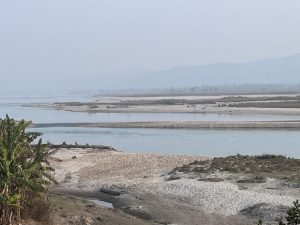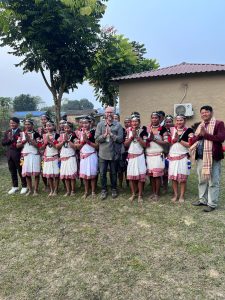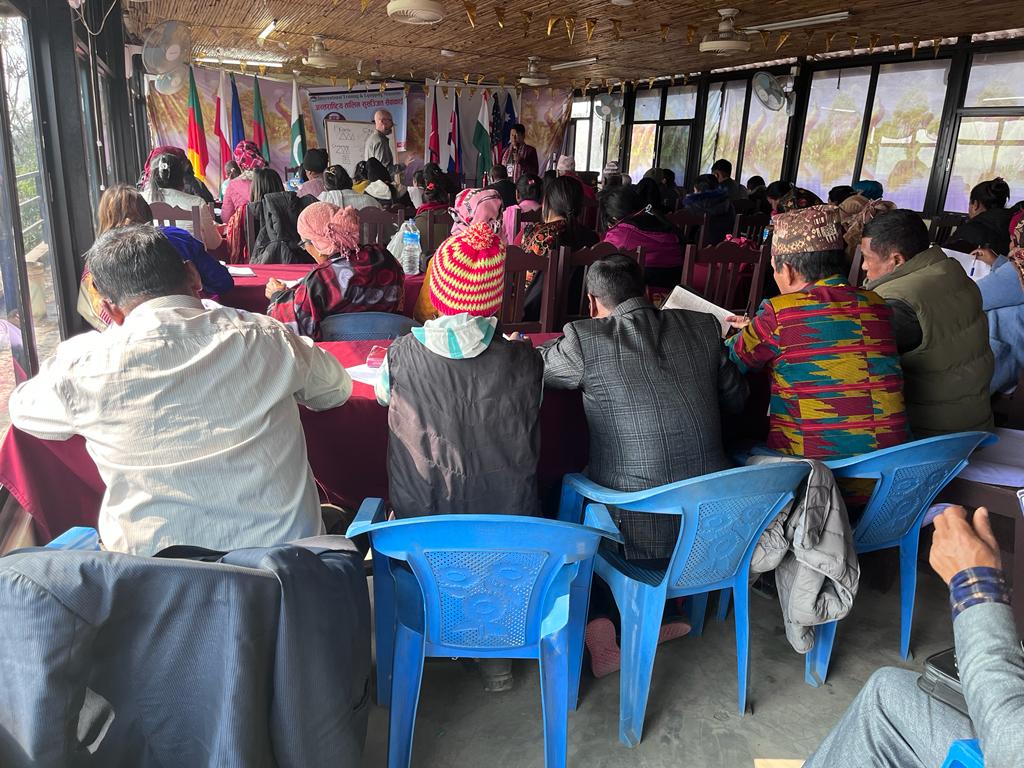When I think of Nepal, I conjure up images of ancient temples, Buddhist monks, and, of course, Mount Everest. As might be expected, I was eager to make my first visit to this mysterious country to meet with a local pastor who has been pleading with us for the past two years to come and train the leaders in his network.
Having arrived in Kathmandu a day early, I made my way to the hotel, which was in the downtown area of the city. Along the way we navigated our way through snarled traffic and even passed by the Pashupatinath Temple, which is one of the most important Hindu temples in the world and a UNESCO world heritage site. The hotel was a great location to set out on foot and explore the main shopping district.
The main street was lined with a motley array of decorative brick, tile, and wooden buildings punctuated by the occasional pagoda-shaped temple. For some reason, the street had a very ancient feel, as if I had entered a time warp. However, I was soon brought back to the twenty-first century when I walked past an entire block of buildings selling some variation of popular American climbing and hiking gear (The Northface anyone?).
Early the next morning I arrived at the airport for my scheduled twenty-minute flight to Bharatpur where I would meet my host. Unfortunately, during the winter months a thick fog settles in the valley and closes the airport for several hours. Nevertheless, sipping on a delicious capaccino helped pass the time.
Having arrived in Bharatpur, I met my host, grabbed my luggage, and then we embarked upon the hour-long drive to Kawasoti. All the mystery and romance of Kathmandu soon faded in the distance replaced by the ramshackle buildings and treacherous roads so common in the developing world.
After a good night’s sleep in my hotel room, we were off to do a one-day training with my host’s network of pastors, church planters, and evangelists. My goal in coming to Nepal was to introduce ITEM’s training, evaluate the level of commitment to training, and to get to know my host. Honestly, I was blown away by the response. Fifty leaders showed up, with one coming from as far away as India.
I spent the whole day teaching on the storyline of Scripture, what theologians call Biblical Theology. The students were attentive and were furiously writing on their notepads. However, it was hard to evaluate if they were learning anything. In Western education, part of the learning process is for the instructor to ask questions and students to respond. However, in honor/shame cultures no one dares to answer a question because they might be wrong and then would be shamed in front of their peers. Therefore, whenever I asked a question, everyone would look down and no one uttered a peep. Just one of the many challenges of cross-cultural communication.
On a side note, the training was held in the conference room at a local resort overlooking a huge river. I was told that often rhinos come to drink at the river. During the latter part of the day while I was teaching, I happened to glance out the window and notice a whole herd of water buffalo swimming from one side of the river to the other. Fortunately, I didn’t get too distracted from the unusual sight and was able to continue the session.

The day concluded with an immersion into Nepali culture as a group of women clad in traditional Nepali dress, performed a cultural dance. I was even pressed into joining the dance at the conclusion of the performance. There is nothing like cross-cultural ministry that forces you out of your comfort zone.

The next day I was invited to come and teach the small Bible school started by my host in the backyard of his home. The school consists of a small open-air classroom seating about 10-15 students and four rooms containing two beds each housing eight students. While it is winter in Nepal currently, during the summer months it gets very hot and humid. The concrete block rooms do not have fans and the heat can easily rise above 100 degrees. When I informed him that we would purchase fans for the rooms, he was ecstatic. But not as ecstatic as the students will be this summer!
Like many indigenous leaders I encounter in my travels, my host is doing incredible gospel work with very few resources. Since 2020, he has planted forty churches in the surrounding unreached villages. As we sat in his backyard talking, the sun eventually giving way to twilight and then darkness, he peppered me with questions about everything from interpretations of the Bible to leadership challenges. Then he asked me a question that sent a shiver down my spine, and it was not from the evening winter chill. “Why do so many missionaries go to Africa? Why do they not come to Nepal? Ninety-eight percent of Nepal has no gospel witness. What about Nepal?”
For the first time on my trip, I was flummoxed. There are missionaries working in Nepal, I assured him. Nevertheless, his question tore open a gaping wound in my heart. What about Nepal? To be transparent, I had come to Nepal expecting to do the one-day training to appease my host and then move on to our other training locations. After all, we are stretched thin with resources as is, and expanding into another country was not in my purview. When I tried to explain this to him, I opened my mouth, but no words came. How can I say no to someone who has labored so tirelessly in such a gospel-deprived land and is merely asking for some help?
What about Nepal? It seems that the Lord has providentially directed us into this field, and we must obey. As in everything, we will trust the Lord for His provision. It is His work. These are His fields. This is for His glory. May we be faithful to the call.
Well, it has been a fruitful trip, and I am preparing to begin the long journey home to the U.S. Until next time, good night from Kawasoti, Nepal.
